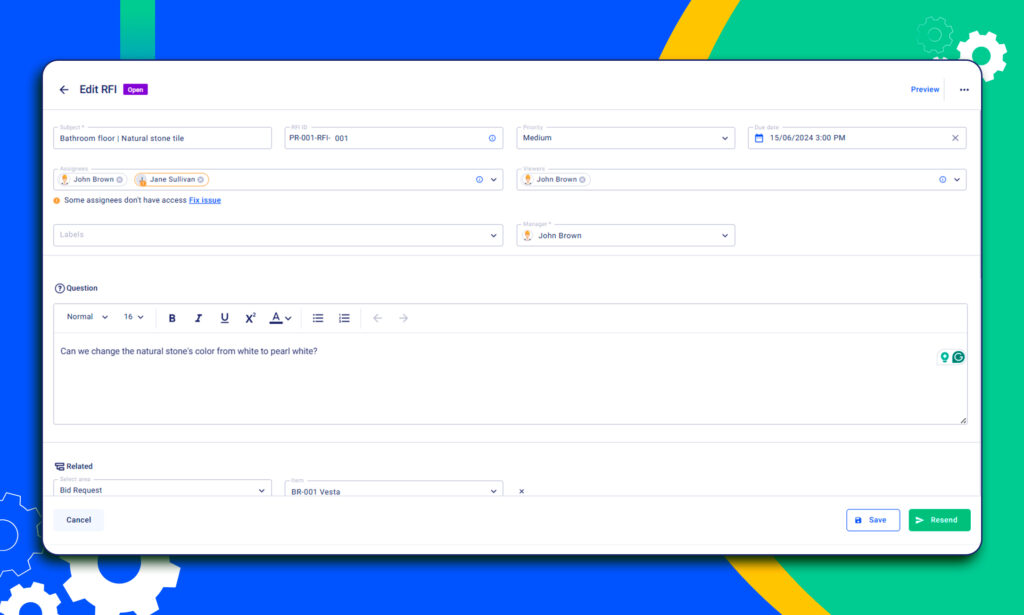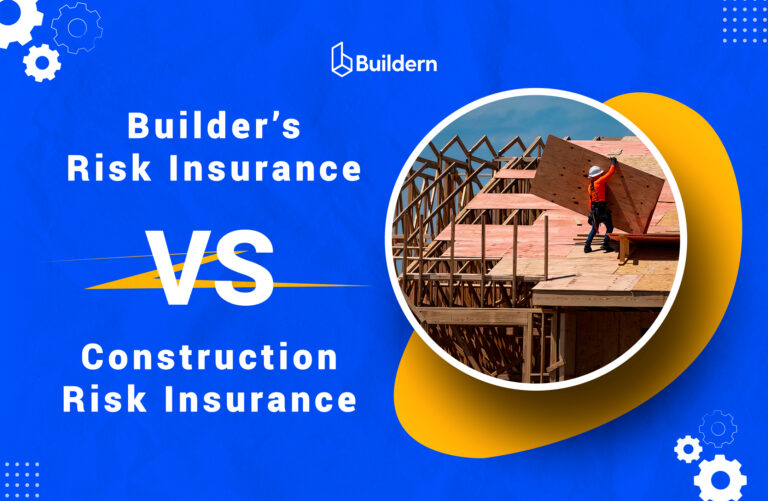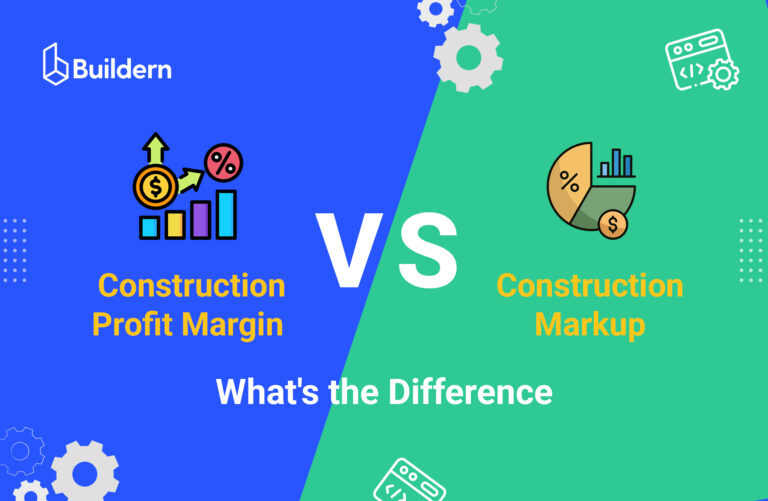How to Grow Construction Business [Tips and Strategies]
![How to Grow Construction Business [Tips and Strategies]](https://buildern.com/resources/wp-content/uploads/2025/08/BLOG_Cover_How-to-Grow-Construction-Business-1-768x501.jpg)
Do you remember the day you landed more projects than you could handle?
Growth in construction is not always as simple as it sounds. Securing more projects may sound like a dream for a general contractor, but this comes with many risks.
Learning how to grow a construction business requires more than just a big workload. Without the right construction team and strategy, rapid growth can quickly lead to problems.
Today, labor shortages and competitive environments put a lot of pressure on builders. So, let’s discuss how to grow a construction business by implementing effective strategies.
Table of Contents
- Growth Landscape for General Contractors
- Common Challenges in Growing a Construction Business
- Strategies to Grow a Construction Business

Growth Landscape for General Contractors
Before drawing a plan to scale a construction business, let’s examine the landscape where general contractors operate.
There is a growing demand across residential, commercial, and infrastructure projects. For example, in the U.S., total construction spending recently surpassed $2 trillion annually.
Besides, using technology in such a landscape is no longer optional. More owners are looking for contractors with specific expertise in areas like green construction and smart homes.
With all the mentioned problems, clients always expect more. They want faster timelines, tighter budgets, and better communication. That’s pushing contractors to rethink how they manage jobs and teams.
Common Challenges in Growing a Construction Business
Any business wants to grow and land more projects eventually. However, the point is that one has to be able to manage the growth to have a sustainable company.
Businesses in any industry can face challenges on the way to growth. Construction companies also face some obstacles. Let’s break down the common challenges and what contractors can do to move forward.
Lack of Qualified Workers
A contractor does not work alone. The success of every project depends on the qualifications and experience of subcontractors who are hired for specific tasks.
Meanwhile, ageing has become a problem in the construction industry. For example, in the U.S., the median age in construction is 42. It’s clear that modern subcontractors need to have a strong technical grasp to be qualified for certain jobs. This results in labor shortages, which also affects the growth of construction businesses.
This is not simply an HR challenge; shortages of skilled personnel result in delayed projects and budget overruns.
The top three trades affected by shortages are:
- HVAC installer technicians
- Wood carpenter
- Glazier workers
These trades are commonly used by general contractors. They usually have a network of reliable subcontractors. However, there can be different conditions.
Imagine something goes wrong during the project, or there is pressure to meet deadlines. In this case, new or underqualified workers are hired to fill in the gaps.
When the business is growing, such cases may grow, too. Without a solid labor force, it’s nearly impossible to scale.
Problems with Cash Flow
Growth often means bigger financial risk. This is the reason a poor cash flow is a common challenge.
Landing more projects means more costs, including materials and labor. But payments do not always come in due time. If you’re waiting for days for an invoice to clear, it’s harder to pay subs or order materials.

When increasing the workload, contractors can use software tools to create and monitor invoices. It’s also possible to integrate them with third-party accounting platforms.
Besides, it would be better to have tools to convert estimates and change orders into invoices, like Buildern does, to avoid further problems with cash flow.
Scaling Too Quickly
If the cost, the team, and cash flow aren’t ready, growth can backfire. Overloading your crew and resources too quickly is a common mistake.
Saying yes to every opportunity is risky when there are not enough resources. Crews jump between jobs, communication breaks down, and quality worsens.
For example, a contractor takes on three mid-size remodels in the same month without adjusting crews. One site runs behind on framing, so workers are pulled from another job to catch up. That second project can fall behind. In that case, subcontractors can simply leave due to scheduling conflicts.
Sustainable growth requires structure. Otherwise, your reputation is affected.
Communication Problems
When a business is growing, more people are involved. Clients, vendors, and subcontractors need updates, approvals, and quick responses. Thus, communication becomes a difficult task.
Lack of a clear system of communication is an obstacle to scaling workload. One missed message can delay a material delivery, and a forgotten call can make a subcontractor do the wrong task. The risk of wrong communication channels results in costly rework and eventually frustrated clients.
The best solution is to collect all messages sent between a general contractor on one hand and vendors and subcontractors on the other in one platform.
In addition to messages, updates can be documented and instantly visible to another party. The same is with RFIs that are used during the project’s entire life cycle. As the business grows, tools like this are used to maintain control.
For example, a project manager can confirm a small but important detail related to the color of stone tiles with the vendor. It can be asked via phone call or email, but there is no formal record. If the vendor forgets or misunderstands, it could lead to ordering the wrong product.
Digitalized RFIs allow the project manager to send the question directly.

Lack of Structured Project Management
In a small or mid-sized building firm, a great portion of the workload falls on a project manager or a general contractor who also performs this role. It’s clear that the role becomes more complex with a growing business.
One of the most common barriers to growth is the lack of a structured project management system. This happens when schedules, budgets, change orders, and crew communications are in different channels.
Some prefer phone calls, some emails, or even text messages, but this causes problems. You might lose track of client approvals or miss an important delivery deadline. A small oversight in an organization’s flow can grow into serious problems and lower profits.
A reliable project management platform can help solve the issues. Of course, introducing software takes time and training for personnel. But once it’s mastered, project management will be smooth and bring results.
Now that we’ve covered the challenges, let’s break down how to grow a construction business with practical strategies.
Strategies to Grow a Construction Business
The challenges we mentioned above show that scaling a construction business requires building a smarter system. Below are some practical strategies that successful general contractors apply to grow their operations.
Set Clear Growth Goals
Let’s start from the very beginning. Anyone should think about scaling; it’s logical and understandable for any businessman. However, growing without a clear plan can quickly lead to burnout or missed opportunities.
If you’re aiming to scale, the first step is defining what “growth” actually looks like for your business. Define the goals clearly:
- Do you want more projects or bigger ones?
- Are you expecting higher profit margins or more predictable cash flow?
- Do you want to change the niche?
A clear, measurable goal helps you focus your time, resources, and decision-making.
To move forward, a general contractor can set monthly or quarterly targets. For example, completing more jobs or increasing revenue. Tracking key performance indicators like cash flow and project profitability is essential to see if the business is developing in the right direction.

Build a Stronger Team
Any goal without a sufficient crew is unrealistic. It’s not a single-person business. Moreover, it’s related to the efforts of the outsourced workers, or subcontractors, who are not a part of the in-house team.
This is the reason building a strong, reliable in-house and extended team is important. This means finding people who understand the standards, communicate well, and can become long-term partners.
However, hiring in construction is just as important. Hire with long-term value in mind, not just to cover the next job. A well-trained estimator or foreman can save you hours each week and prevent costly mistakes. And when you do rely on subcontractors, make sure they’re not just available, but reliable and accountable.
Growth becomes much easier when you have people who can handle the work.
Improve Client Experience
The construction business is a very competitive industry. Client experience affects the future of your business as it’s a key factor for the customer.
It’s not only about building a house; the client trusts you with their time and money. And, trust is built through consistent communication, transparency, and attention to detail.
Clients don’t like surprises, especially not around budgets or timelines. Easy communication and clear updates are crucial.
Moreover, it’s better to inform the client about a mistake or a potential overbudget situation in advance than to make last-minute changes without warning.
For example, the framing crew discovered that a section of the foundation wasn’t poured to plan. Let the client know right away, even if you don’t yet have a full solution. Waiting until the drywall is delayed or the budget jumps by several thousand dollars will only create frustration and damage trust.
When the business grows, one person is not enough to call every minute to make the client aware of such cases. A solution is to streamline the communication, for example, by managing all messaging in one software tool.

Control Your Finances Before Scaling
Smart financial planning is about knowing where your money is going and what’s coming next.
Start with tracking job costs, monitoring profit margins, overhead, and making accurate WIP reports. This will help in making better decisions about hiring, pricing, and taking on new projects.
It’s also important to plan for the slow seasons. Construction often follows a seasonal rhythm. Forecasting the expenses is useful to avoid last-minute cash flow shortages. The more clarity there is around numbers, the more confidently you can grow.
Focus on Profitable Niches
Prefer quality over quantity when scaling. This may sound strange, but not every project may be worth the time.
Chasing every opportunity may affect the workflow. Instead, growth becomes a lot more manageable when you focus on the types of projects that consistently bring in the best returns.
Think about the jobs where your crew works efficiently and brings more profit. For example, it could be remodeling or only commercial construction.
Specializing makes it easier to market. If a contractor has a good portfolio in a specific niche, this reflects the strength, and clients are more likely to trust this firm.
This doesn’t mean turning down every job outside the niche. Learn what’s working and what’s just keeping you busy. Once you know which projects are worth taking, it’s time to focus energy on growing in a particular direction.
Use Construction Technology
In 2025, people are really worried about the possibility of AI replacing the workforce. However, this does not mean applying technology in real life will replace the crews.
As projects become more complex, companies can turn to digital tools and AI to stay organized and save time. One area where AI is already proving its value is billing. AI billing tools can automatically scan and fill in data from bills.

The same applies to other areas, like creating timesheets or calculating estimates. You don’t need to adopt every new tool on the market. However, choosing a few that solve real pain points can make a difference.
The right tech helps you spend less time on details and more time running your business.
Level Up Your Marketing
Word of mouth is important, but it’s not a sustainable marketing strategy. Do not run ads just for showing up, but show the target audience what you do best.
Start with the basics: create a portfolio of the best works highlighting your niche. A website or social media channels must feature high-quality visuals of the general contractor’s work.
Use local SEO and targeted digital ads to dominate a specific neighborhood or service type. The idea is that marketing does not need to be too expensive, but targeted. If you’re ready to grow, it’s time to market your business as well as you build.
What is the First Step in Growing a Construction Business?
It’s defining what you mean by saying “growth” for your business. One thing is to increase the number of projects, another is to improve profit margins. Once the goals are set, assess if you have sufficient resources, including team and cash flow, to go to the next level.
What are the Biggest Risks When Scaling Too Fast?
Prepare a solid background before potential growth. This refers to the team and finances. Do not rush into growth without proper planning, as this may lead to delays and frustrated clients.
Should I Focus on More Projects or Profitability?
It depends on the long-term goals, but in most cases, focusing on profitability is the smarter strategy. Having many projects does not always mean there is a profit growth. When the focus is on the types of projects that bring in the best returns, a general contractor can do fewer jobs while maintaining or increasing the income.



